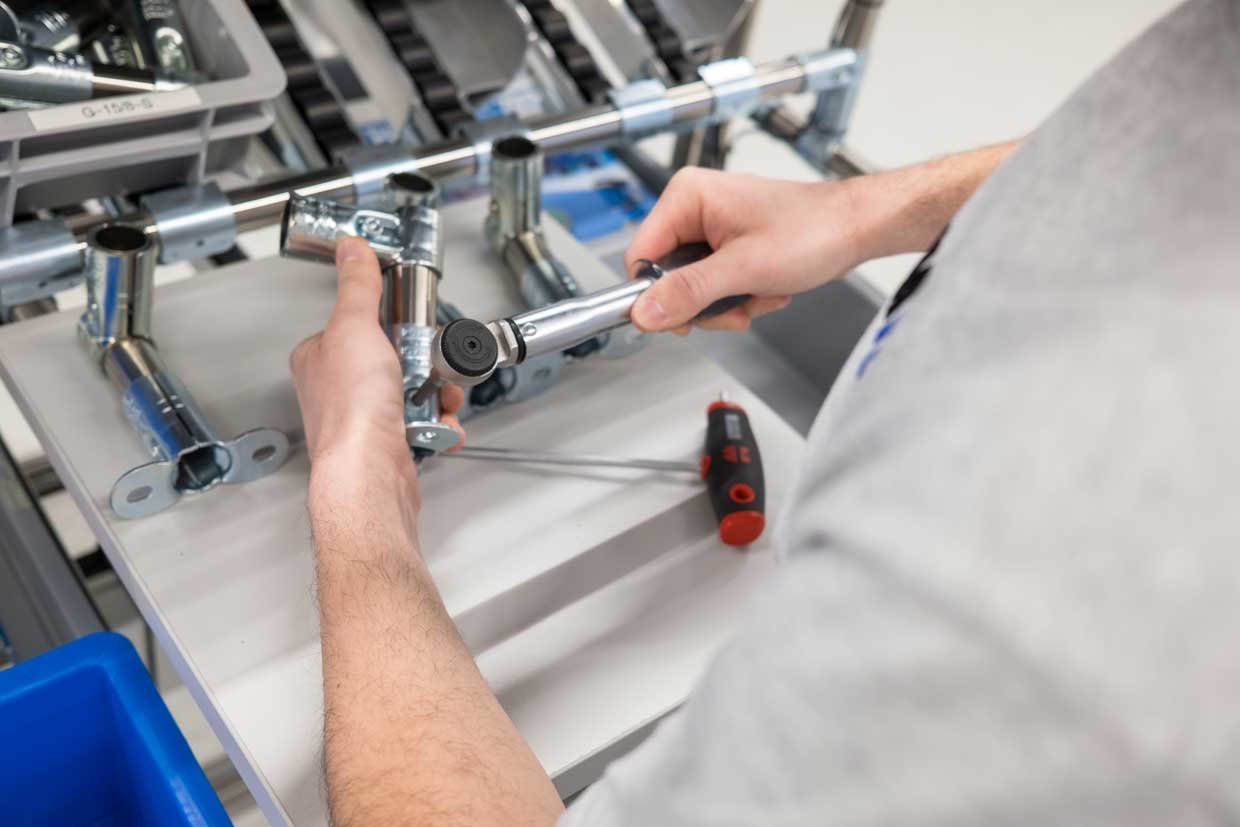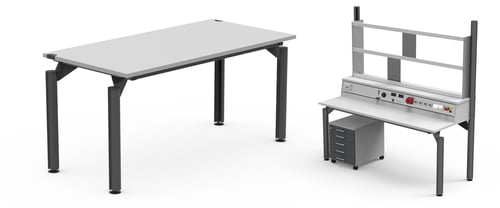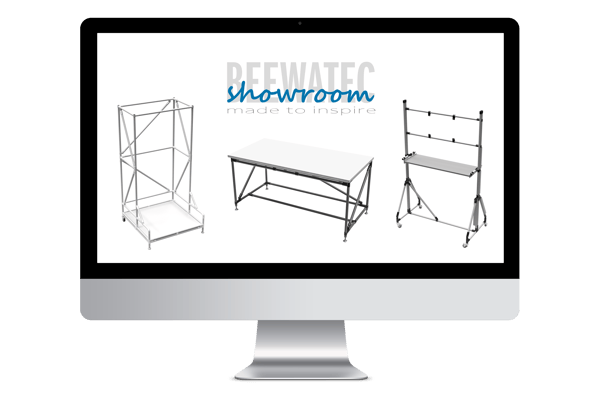Warehouse logistics is at the core of efficient supply chain management, ensuring goods are stored, handled, and shipped seamlessly. From inventory management to material handling, every aspect of warehouse operations plays a critical role in meeting customer expectations and controlling costs. As industries evolve, businesses face growing demands for speed, accuracy, and flexibility in their logistics processes.
In this article, we explore the fundamentals of warehouse logistics, why it’s crucial for operational success, and share five actionable tips to enhance your warehouse’s efficiency. Whether you’re looking to optimize storage, streamline order fulfillment, or leverage cutting-edge technology, these strategies will set you up for success in a competitive landscape.
What is Warehouse Logistics?
Warehouse logistics refers to the systems and processes involved in managing the movement and storage of goods within a warehouse. It encompasses a range of activities, from inventory management and storage to order fulfillment and shipping. Effective warehouse logistics ensures that products are stored efficiently, easily accessible, and ready to be moved through the supply chain in a timely manner.

Key Components of Warehouse Logistics
- Inventory Management
This includes tracking stock levels, monitoring demand, and ensuring that the right quantity of products is available. Good inventory management helps prevent stockouts and overstocking, keeping operations smooth and cost-effective. - Storage Optimization
Organizing products within the warehouse space for easy retrieval is a key part of logistics. This often involves categorizing items, using optimized shelving systems, and employing strategies like FIFO (first in, first out) to ensure inventory flow. - Order Fulfillment
Once orders are placed, warehouse logistics manages picking, packing, and preparing products for shipment. Efficient order fulfillment is crucial for meeting customer expectations and minimizing delays. - Material Handling
This covers the movement of products within the warehouse, from receiving areas to storage, and eventually to packing and shipping. Material handling often involves machinery such as forklifts, conveyors, and automated storage and retrieval systems. - Shipping and Receiving
Warehouse logistics manages the receiving of incoming goods and the shipment of outgoing products. This process includes quality checks, labeling, and ensuring that goods are shipped accurately and on time. - Data and Technology Management
Many warehouses use Warehouse Management Systems (WMS) to track inventory, streamline operations, and provide real-time data on product locations and movement. Automation and technology (like AMR / autonomous mobile robots) play a growing role in improving warehouse logistics.
Why is Efficient Warehouse Logistics Important?
Efficient warehouse logistics is critical because it directly impacts supply chain efficiency, customer satisfaction, and overall operational costs. When managed well, it reduces delays, minimizes storage costs, optimizes space, and enables fast, accurate deliveries. In essence, it is a central piece of the broader supply chain puzzle, ensuring that goods flow smoothly from suppliers to customers.
How to improve Warehouse Logistics? 5 tips to Improve warehouse Logistics
Improving warehouse logistics can lead to greater efficiency, reduced costs, and improved customer satisfaction. Here are five tips to enhance warehouse logistics:
1. Optimize Warehouse Layout and Space Utilization
- Tip: Design the layout to minimize travel time and make high-demand items more accessible. Consider zone picking, slotting optimization, and vertical storage to maximize available space.
- Benefit: An optimized layout reduces the time spent moving goods, leading to faster order fulfillment and lower labor costs.
2. Implement Automation and Technology
- Tip: Invest in Warehouse Management Systems (WMS) to track inventory in real-time and integrate automation tools such as barcode scanners, conveyors, and automated picking systems.
- Benefit: Automation reduces human error, improves accuracy, and accelerates processes like picking, packing, and inventory management.
3. Focus on Inventory Management and Demand Forecasting
- Tip: Use data analytics and forecasting tools to predict demand, streamline inventory levels, and plan for peak seasons. Practices like Just-in-Time (JIT) inventory management can also help minimize overstocking.
- Benefit: Accurate inventory levels ensure that goods are available when needed, reducing stockouts, overstock costs, and warehouse congestion.
4. Enhance Employee Training and Safety
- Tip: Regularly train employees in best practices for material handling, equipment operation, and order fulfillment. Implement safety measures and ergonomic practices to reduce workplace injuries.
- Benefit: Well-trained staff can operate more efficiently and safely, which reduces mistakes and downtime due to accidents.
5. Use Data Analytics for Continuous Improvement
- Tip: Track key performance indicators (KPIs) like order accuracy, picking speed, and inventory turnover. Use data to identify bottlenecks and areas for improvement.
- Benefit: Data-driven insights allow for continuous optimization, helping to make informed decisions that improve operational efficiency over time.
By implementing these tips, warehouses can achieve smoother operations, lower costs, and greater customer satisfaction, ensuring they remain competitive and responsive to changing demand in the supply chain.
Challenges of warehouse logistics
Warehouse logistics faces several challenges that impact efficiency and customer satisfaction. Here are some key ones with examples:

- Inventory Inaccuracy
Mismatched stock levels lead to stockouts or overstocking. For example, if a retail warehouse miscounts inventory, it could promise items to customers that aren’t actually available, causing delays or cancellations. - High Operational Costs
Rising labor, energy, and storage costs can strain budgets. For instance, a warehouse handling perishable goods may face high refrigeration costs, impacting profit margins. - Space Constraints
Limited space reduces efficiency and increases retrieval time. A small e-commerce warehouse may struggle to store the variety and volume of goods needed, causing delays in fulfilling orders. - Complexity in Order Fulfillment
Managing multiple orders and reducing picking errors is challenging. For example, during holiday seasons, a warehouse may experience surges in orders, leading to mistakes if processes aren’t streamlined. - Adaptation to Technological Changes
Implementing and keeping up with technology requires investment and training. If a warehouse introduces automation without adequate training, it can lead to slower processing and costly errors.
Each challenge requires strategic solutions to maintain efficiency and competitiveness.
How the Supply Chain Management Transforms Warehouse Logistics for Better Efficiency
The supply chain management plays a vital role in transforming warehouse logistics to achieve higher efficiency. By creating a smooth flow of goods, data, and resources, the supply chain enhances the overall productivity and effectiveness of warehouse operations. Here’s how it achieves this:
1. Demand Forecasting and Inventory Management
- Impact: Supply chain insights allow warehouses to predict demand patterns and manage inventory levels accurately. This means stocking the right products in the right quantities, reducing overstocking or stockouts.
- Result: Warehouses can reduce holding costs, avoid inventory waste, and ensure products are available to meet customer demand.
2. Streamlined Order Fulfillment
- Impact: Integrating warehouse logistics with the supply chain enables faster, more accurate order picking and packing, as warehouses receive real-time order information & run smoothly.
- Result: This coordination minimizes fulfillment time, improves order accuracy, and enhances customer satisfaction with prompt deliveries.
3. Improved Visibility and Tracking
- Impact: With supply chain tracking systems, warehouses can monitor goods at each stage—tracking inbound shipments, stock levels, and outgoing orders. This visibility allows for proactive adjustments and reduced delays.
- Result: Real-time tracking optimizes warehouse flow, reduces bottlenecks, and enhances transparency, which is valuable for decision-making and customer communication.
4. Optimized Transportation and Distribution
- Impact: By coordinating with transportation within the supply chain, warehouses can schedule incoming and outgoing shipments effectively, optimizing load sizes and routes.
- Result: This synchronization reduces transportation costs, lowers fuel consumption, and speeds up product movement from warehouse to customer.
5. Adoption of Automation and Technology
- Impact: Supply chain advancements encourage the adoption of technologies like Warehouse Management Systems (WMS), barcode scanners, and automated retrieval systems.
- Result: Automation reduces manual labor, minimizes human error, and speeds up tasks such as inventory counting and order picking, resulting in a more efficient and cost-effective operation.
In summary, the supply chain transforms warehouse logistics by synchronizing processes, increasing visibility, and promoting technology adoption. This leads to streamlined operations, lower costs, and faster delivery times—ultimately making warehouses more efficient and responsive.

DOWNLOAD NOW!
Checklist to improve warehouse logistics
Download this Checklist to help you measure and optimize processes in your company effectively.
Download for freeChecklist to improve warehouse logistics
After you have filled out and sent the form, you will receive the checklist immediately by e-mail.
Why Automation is Essential for Modern Warehouse Logistics
Automation is essential for modern warehouse logistics, driving significant improvements in efficiency, accuracy, flexibility, and cost-effectiveness. As the logistics industry faces increasing demands for faster deliveries, automation plays a key role in streamlining operations and optimizing warehouse workflows. Here’s why automation is crucial for today’s warehouses:
1. Increased Efficiency and Reduced Labor Costs
Automated systems accelerate tasks such as picking, sorting, and packing, reducing the reliance on manual labor. This efficiency leads to lower operational costs and enables warehouses to handle higher order volumes without proportionally increasing staffing levels.
2. Enhanced Accuracy and Reduced Errors
Automation tools like barcode scanners, automated guided vehicles (AGVs), and robotic picking systems minimize human errors in processes such as inventory management and order fulfillment. This leads to fewer returns, reduced waste, and a smoother, more reliable operation.
3. Improved Flexibility and Scalability
Automation systems can easily scale up or down to accommodate fluctuations in demand or seasonal peaks. With automated processes, warehouses can quickly adapt without the need for extensive reorganization, ensuring smooth operations year-round.
4. Better Space Utilization
Automated storage and retrieval systems (ASRS) and mobile robots optimize space usage by enabling efficient vertical storage and reducing aisle widths. This maximizes storage capacity, reduces congestion, and improves overall warehouse flow.
5. Real-Time Data and Analytics
Automation technologies provide valuable real-time data that helps warehouse managers monitor inventory levels, order status, and overall performance. This enables data-driven decision-making and allows warehouses to proactively address any operational challenges.
wheel.me: A Perfect Solution for Warehouse Logistics
- wheel.me, developed by BeeWaTec, is a cutting-edge Autonomous Mobile Robot (AMR) designed to revolutionize warehouse logistics. These intelligent robots autonomously transport goods across the warehouse, efficiently handling tasks such as order picking, material handling, and inventory replenishment. Equipped with advanced navigation technology, wheel.me robots can autonomously navigate warehouse environments, avoiding obstacles and adjusting their routes in real time.
- Why wheel.me is Ideal: wheel.me’s AMRs integrate seamlessly with Warehouse Management Systems (WMS), optimizing warehouse operations with minimal need for layout reconfiguration. These robots offer maximum flexibility, adapting to changing warehouse conditions and product types without requiring significant infrastructure changes. By reducing the reliance on manual labor and improving operational efficiency, wheel.me robots make warehouse logistics faster, safer, and more cost-effective.

In summary, automation, particularly with innovative solutions like wheel.me, is a game-changer for modern warehouse logistics. It allows warehouses to streamline operations, reduce costs, improve order accuracy, and increase scalability, ultimately enhancing overall efficiency and competitiveness in the supply chain.
How warehouse Logistics in the future could looks like?
The future of warehouse logistics will likely be defined by:
- Automation & Robotics: Widespread use of robots, drones, and autonomous vehicles to streamline tasks like sorting, picking, and delivery.
- AI & Data Analytics: AI-driven predictive analytics and smart systems will optimize inventory management, demand forecasting, and operational efficiency.
- IoT & Smart Warehouses: Connected devices and sensors will provide real-time tracking and improve inventory accuracy, space usage, and equipment maintenance.
- Sustainability & Green Practices: Increased use of eco-friendly materials, renewable energy, and electric vehicles to reduce the environmental impact of logistics.
- Personalized & Agile Fulfillment: Fast, on-demand manufacturing (e.g., 3D printing), localized warehouses, and enhanced customer personalization will speed up and improve the delivery process.
How BeeWaTec Lean Solutions help to optimize warehouse logistics
BeeWaTec Lean Solutions offer a range of tools and technologies designed to optimize warehouse logistics, focusing on improving efficiency, reducing waste, and enhancing flexibility in operations. Here are several ways their solutions can help:
1. Automation of Material Handling
BeeWaTec provides lean solutions for low cost automation like Karakuri and autonomous mobile robots / AMR (wheel.me) that streamline material handling. These systems reduce the need for manual labor, cut down on human error, and speed up the movement of goods within the warehouse, improving throughput and reducing bottlenecks.
Example: Mobile robots can transport goods from storage areas to packing stations without the need for human intervention, increasing efficiency and reducing lead time.
2. Lean Storage Solutions
BeeWaTec's solutions offer smart storage systems, modular racking systems, and adjustable shelving that can maximize storage space and improve inventory management. By optimizing the use of available space, warehouses can store more products in the same footprint, reducing the need for costly expansion or additional facilities.
Example: BeeWaTec’s modular racking systems can adapt to changing inventory sizes, ensuring optimal storage and reducing wasted space.
3. Flexible Workflow Management
The BeeWaTec Lean Solutions facilitate customized workflow layouts, allowing warehouses to adjust quickly to changing business needs. Their systems help design efficient picking and packing processes, minimizing unnecessary movement and improving the overall efficiency of order fulfillment.
Example: The modular workstations allow warehouses to adjust processes to fit high-demand periods, providing flexibility in staffing and reducing downtime.
4. Improved Inventory Control
By using automated inventory management tools, businesses improve the accuracy and efficiency of inventory tracking. These systems ensure real-time visibility of stock levels, reducing the risk of stockouts, overstocking, or misplaced items.
Example: Automated inventory tracking systems (e.g. pick-by-light systems) integrated into BeeWaTec's solutions help monitor stock levels and reorder items just in time, ensuring smooth operations.
5. Ergonomic and Worker-Centric Designs
BeeWaTec places a strong emphasis on ergonomics and worker well-being, offering adjustable workstations, mobile carts, and tools designed to reduce physical strain on workers. This not only improves worker safety but also boosts productivity by making the tasks easier and faster to complete.
Example: BeeWaTec’s ergonomic workstations and mobile material handling equipment allow workers to transport goods with minimal physical effort, reducing fatigue and enhancing productivity.
In summary, BeeWaTec Lean Solutions optimize warehouse logistics by automating material handling, maximizing storage, offering flexible workflows, improving inventory control, and prioritizing ergonomic designs. These solutions help businesses streamline operations, reduce waste, and increase overall efficiency.
Conclusion
In conclusion, warehouse logistics is rapidly evolving with the integration of automation, AI, IoT, and lean principles, all of which enhance efficiency, reduce costs, and improve inventory management. By adopting advanced solutions like those offered by BeeWaTec, businesses can streamline operations, increase throughput, and provide better service to customers. The future of warehouse logistics will be defined by greater flexibility, real-time tracking, and sustainable practices, driving faster, smarter, and more cost-effective supply chains.
Explore lean solutions to optimize warehouse logistics
With our modular system you can implement any solution you need. Discover your possibilities, existing solutions or build your own material flow system with BEEVisio in 3D.




_Web_01_01.jpg?width=1240&name=Beewatec-3-(37)_Web_01_01.jpg)


